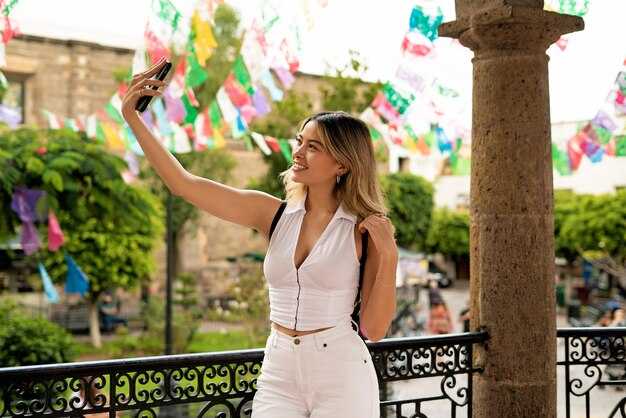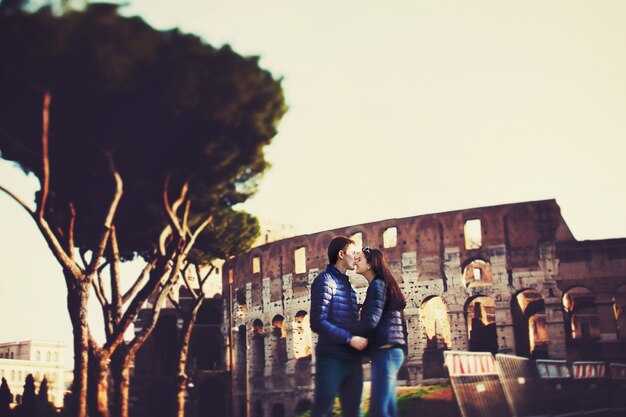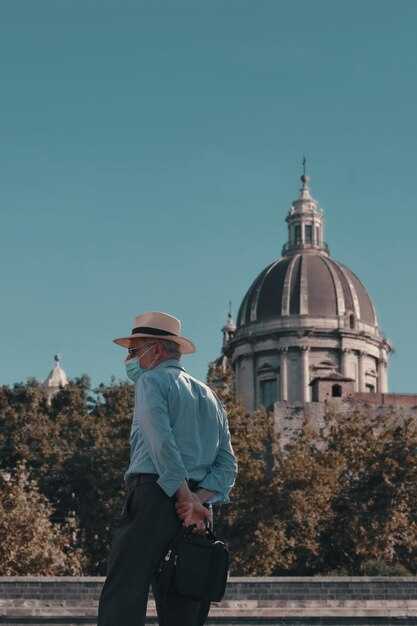Begin at Plaza de Mayo at dawn to feel the city breathe and map your destination for a day of memory. In the central square, a column of light spills across the Casa Rosada, and the air carries the rich pulse of a town that has welcomed migrants, generals, and dreamers alike.
From there, wander toward the Teatro Colón, where an intricate interior houses frescoes and a history that pioneered modern stagecraft. The building stands on a block that has hosted operas, premieres, and debates since the 19th century, showing how culture and public life shaped the city.
In defensa, San Telmo’s streets run along a long block where a line of houses keep watch over markets and memories. Interested readers peek into the bares along the way, where conversations spill into the evenings. A mural by juan Díaz reveals memories of the port region and the people who kept trade running through the years.
Head to La Boca, where yellow houses line the Caminito and frescoes brighten a memory-rich town that kept its color even as ships shifted the coast. The nearby stadium anchors a living, breathing tradition, while street musicians and dancers keep the rhythm of the port alive.
Interested readers will map a region-wide loop that links Plaza de Mayo, San Telmo, La Boca, and Recoleta–like a compact atlas you can walk. Embora quick, the route runs through layers of social history and architectural detail that draw the eye to every corner.
A History Lover’s Guide to Buenos Aires: Timeless Landmarks and Hidden Stories; – 5 Manzana De Las Luces
Start your exploration at 5 Manzana De Las Luces by entering through the gate on Defensa Street and dedicating about 40 minutes to trace the jesuítica core: the old Colegio Nacional, the nearby basílica, and the winding lanes that connect these spaces. This is a concrete recommendation to begin here, a must for many visitors.
Within the block, the jesuítica education network shaped regions across argentina and argentinas, serving the elite with schools and a network that linked to missions in Asia; facades and interiors still show painted ceilings and careful stonework that speak to histórico time.
Hidden stories: a cave beneath the street floor is whispered to connect to early Jesuit cellars; tourist guides sometimes include these spaces, and you can see exhibitions and a collection that illuminate the era. Below the cobbles, mayo events and the movement that formed the national memory are hinted in old maps and plaques.
Practical tips: sip coffee at cafes and sample food in nearby places; the 5 Manzana De Las Luces site is designated as a national historic site, so follow access routes and signs. This area suits a tourist who wants to explore urban history on foot and mix with local life.
From 5 Manzana De Las Luces, extend your walk to places along plata’s riverfront and surrounding plazas; the francis legacy appears in street names and plaques, and you will sense how the regions and nations of argentinas define a shared history. The experience invites you to explore the connections between the navy heritage, the early education networks, and the cultural food and arts around the block.
| Site / Aspect | Porque é importante | What to do | Melhor altura para visitar |
|---|---|---|---|
| Old Colegio Nacional | Centerpiece of the jesuítica education network within the block | Walk the arcaded corridors; read plaques; observe painted ceilings | Morning 9:00–12:00 |
| Basílica nearby | 18th-century church with quiet interiors | Admire architecture; look for histórico markers | Midday 12:00–14:00 |
| The cave beneath | Legendary subterranean space linked to early Jesuit cellars | Ask at the desk for guided access if available | Seasonal |
| Exhibitions and collection | Artifacts showing education, missions, and regional links | Review timelines; compare with connections to nations | Afternoon 14:00–17:00 |
Starting Point and Route: Where to begin on Manzana de las Luces

Begin at the Front Plaza and follow the clockwise route to catch the strongest light on granite façades and glimpse the block’s long history in a single walk.
Initial Stop: Front, Exhibits, and Local Life
At the front, the house-like jesuits buildings frame the space. The daily flow of locals passes the central courtyard, and a confitería next door and a pizzería across the street provide a natural break. The cave-like corridor opens into a gallery with displays and exhibits that present a rich, global narrative of the jesuits’ impact on education, urban design, and ecological thinking in the surrounding region. rafael, a local guide, provides a running commentary that notes the notable final panel reveals how the block grew from a school to a living showcase of Buenos Aires life–having played a pivotal part in city culture. If you’re a soccer fan, you may catch a quick game on a nearby court that adds a human touch to the scene.
Route Details: Practical Tips and Final Observations
From the front, you walk toward a second cluster of spaces where granite walls host more displays and a small ecological corner that illustrates adaptation to the city’s climate. The route is compact, sure to deliver a strong sense of place, and the confitería and pizzería offer opportunities to stay and reflect. The final takeaway is that the jesuits’ legacy remains visible in daily life and in the way surrounding streets accommodate visitors. This remarkable segment of Buenos Aires history showcases how global ideas took root in a regional setting.
Key Buildings on the Block: What to look for and why they matter
Begin at the Moreno-Defensa corner and walk a short loop; you’ll spot grand, acclaimed facades, houses, and stores that anchor the neighbourhood. Read the plaques to learn who funded restorations and which presidents or politicians once spoke from the doorway. The block’s layout–fronts facing the street and quiet spaces behind–shows how public life and private life shared the same space, more layers than a single plaque could tell.
What to observe on the facade and the space behind
Look for a consistent rhythm of windows, the height of the cornices, and the transition from stone to brick. A well-preserved corner often marks a historical frontier between eras; the back often hides a small cave-like courtyard used by residents or shopkeepers. The lining of stores tells you about daily life–bakery, bookseller, hardware–each a clue to the block’s economy. Others kept tiny workshops behind the storefronts, a space not visible from the street. When you see a stadium nearby, notice how crowds spilled onto sidewalks and how merchants adapted to the rush.
Reading the people and the power on the block
Identify who lived here or ran the businesses: influential families, a team of artisans, or groups linked to peróns whose letters might still be in archives. The block records a continuum of policy and culture, from early grand style to modern, casual stores. Whether you walk with a notebook or a phone, you will read a story of resilience and change that connects asia-inspired details with local craft, a reminder that every block holds a thread of the city’s wider history, including miní spaces and traces of public life.
Untold Stories: Lesser-known legends and historical moments

Begin at Plaza de Mayo: read the inscriptions on the Cabildo and Casa Rosada and let the stories spill into your map, revealing how the city’s early political life forged a living legacy.
From there, these routes offer opportunities to read original accounts and compare them with living memory. If youre curious, youre about to discover an argentine history beyond the famous names, america’s southern front, and the everyday life of porteños.
-
Jesuits, ships, and hidden chapels
Originally, the Jesuits ran missions along the river and built networks that educated generations. Today, markers along the port stretches hint at those days. In mayo, a small chapel behind a market preserves a living memory and a miní artifact rumored to be part of a clandestine exchange between religious and civic groups. They remind you that history is a collective effort, not a single name, and youre invited to read the plaques and ask locals about these quiet corners; their stories are among the city’s enduring legends.
-
Os discretos arquitetos da Revolução de Maio
Em 25 de maio de 1810, o Cabildo Abierto catalisou uma ascensão política que mudou a cidade. Além dos líderes famosos, impressores, funcionários, soldados e mulheres moldaram a decisão com discussões em salas reservadas e atas arquivadas que mais tarde apareceram em histórias publicadas. Essas vozes, sem dúvida influentes, revelam como um punhado de atores comuns dirigiu um ponto de virada que ainda hoje influencia a sua visita.
-
Avenida de Mayo: uma artéria intercultural
Estende-se do porto ao Congresso; as fachadas de influência francesa ficam ao lado de estilos locais, criando um legado de intercâmbio que tanto as autoridades argentinas quanto os leitores americanos poderiam reconhecer. Ao longo de seus sítios, o Café Tortoni (aberto desde 1858) e os primeiros teatros sediaram debates e apresentações que alimentaram a cultura política em maio e além. A avenida permanece como uma rota duradoura para a vida diária e procissões cerimoniais.
-
Memória oculta ao longo do porto se estende
A orla fluvial guarda capítulos mais tranquilos: mercados onde os trabalhadores se organizavam, histórias de vida corajosa e murais que preservaram heróis que raramente aparecem em histórias polidas. Entre esses vestígios, você pode ler vozes da comunidade e a conexão duradoura entre o mar e a cidade. Quer você esteja caminhando ao amanhecer ou passeando depois do pôr do sol, certamente descobrirá algo que desafia o mapa.
Património Educacional: Museus, bibliotecas e instituições que pode visitar
Comece no Museo Nacional de Bellas Artes, em Recoleta, para ter uma janela concreta para o passado através de Goya, Rembrandt e mestres argentinos; a fachada branca e imponente abre-se para galerias que traçam a ascensão da vida e cultura de Buenos Aires. Faça uma visita guiada, reserve bilhetes para exposições especiais e reconheça a oportunidade de conectar a arte com a vida diária e as tradições comunitárias. Depois, passeie até aos bares próximos para uma refeição – as opções de comida abundam – e reflita sobre como a cultura visual molda o sentido de passado e presente da cidade.
Em seguida, visite a Biblioteca Nacional da Argentina para explorar vastas pilhas, manuscritos e exposições focadas em ciência que revelam como a informação viaja entre regiões e através do tempo. As linhas arrojadas do edifício deixam uma impressão duradoura, e você pode fazer um tour guiado por um docente ou um passeio autoguiado para comparar notas manuscritas com catálogos modernos. Se você quiser um momento prático, alguns programas convidam os visitantes a deixar impressões de mãos em uma parede de hóspedes. Planeje atravessar a cidade pegando o transporte público pelos bairros do centro e reserve um tempo para uma leitura tranquila em uma das salas de leitura; esta instituição torna o aprendizado acessível a todos, fortalecendo a comunidade. Os próprios edifícios contam uma história de intenção arquitetônica.
Museus icónicos num relance
O MALBA e o Museo Histórico Nacional estendem a história para além das paredes brancas, oferecendo um olhar distintivo sobre a arte latino-americana, a memória colonial, os fortes ao longo do rio e os motivos de cruz na arte pública. As imagens religiosas – incluindo Jesús – abrem uma janela para diferentes tradições regionais, enquanto as instalações iluminam o impacto da cultura na vida das pessoas nos Andes e noutras regiões. Estes sítios convidam-no a tratar a história como performance – um diálogo ativo e em evolução com o passado – e a apreciar como os museus desencadeiam conversas ponderadas sobre identidade e memória.
Bibliotecas e instituições que você pode visitar
Além das galerias, Buenos Aires abriga museus universitários, centros de ciências e instituições públicas que recebem visitantes. Participe de programas guiados que conectam a ciência ao cotidiano, ouça pesquisadores discutirem seu trabalho e aprenda como a era Mariano Moreno moldou a política educacional. Se você se planejar com antecedência, reservará lugares para palestras, fará anotações em salas silenciosas e terminará com um passeio final por um distrito de estádios onde os moradores locais celebram tradições e futebol. Combine uma parada na biblioteca com uma rápida degustação da comida local e você sairá com uma noção mais clara de oportunidade, impacto e como a educação constrói uma cidade viva para todos.
Dicas para Amantes da História: Melhores horários, ingressos, fotografia e segurança
Tempo e bilhetagem inteligentes
Compre bilhetes online com hora marcada para os museus que planeia visitar e chegue 15 minutos mais cedo para se instalar. Escolha uma janela da manhã antes das 11:00 ou um horário ao final da tarde depois das 15:30; estes horários designados reduzem as filas e permitem-lhe estudar os detalhes sem pressa. Se planear visitar vários locais, procure uma coleção pública ou ofertas provinciais que cubram as entradas em toda a cidade e nos seus bairros, tornando o seu dia mais eficiente. Os jovens qualificam-se frequentemente para descontos, por isso leve um documento de identificação de estudante. Se viajar em grupo, verifique se o pacote inclui adultos e jovens. Através de uma única compra, terá acesso a locais clássicos e a exposições mais recentes, e poderá comparar diferentes épocas, desde a fronteira da arquitetura antiga à cidade moderna. Quando precisar de uma pausa, extensões de salas tranquilas oferecem um momento para se reagrupar antes das próximas paragens.
Fotografia, segurança e etiqueta
Leve uma câmara compacta ou um telemóvel com uma opção de grande angular; evite o flash em interiores para proteger artefactos. Fotografe através de portas e janelas quando permitido e mova-se lentamente para respeitar os outros visitantes. Em praças movimentadas e perto de bares populares, proteja a sua carteira e telemóvel; permaneça em espaços públicos e evite áreas isoladas depois de escurecer. Verifique os horários e regras exatas de cada local; sinais designados indicam onde pode fotografar. Após a sua visita, coma uma fatia de pizza num local próximo e reflita sobre a coleção que viu, incluindo itens que fazem referência a ángel e mariano, instalados nas exposições. Se quiser um contexto mais amplo, compare as histórias que encontra com Humahuaca e as narrativas públicas das nações, e note como estas histórias são apresentadas dentro dos bens comuns e em todos os bairros da cidade.



Comentários